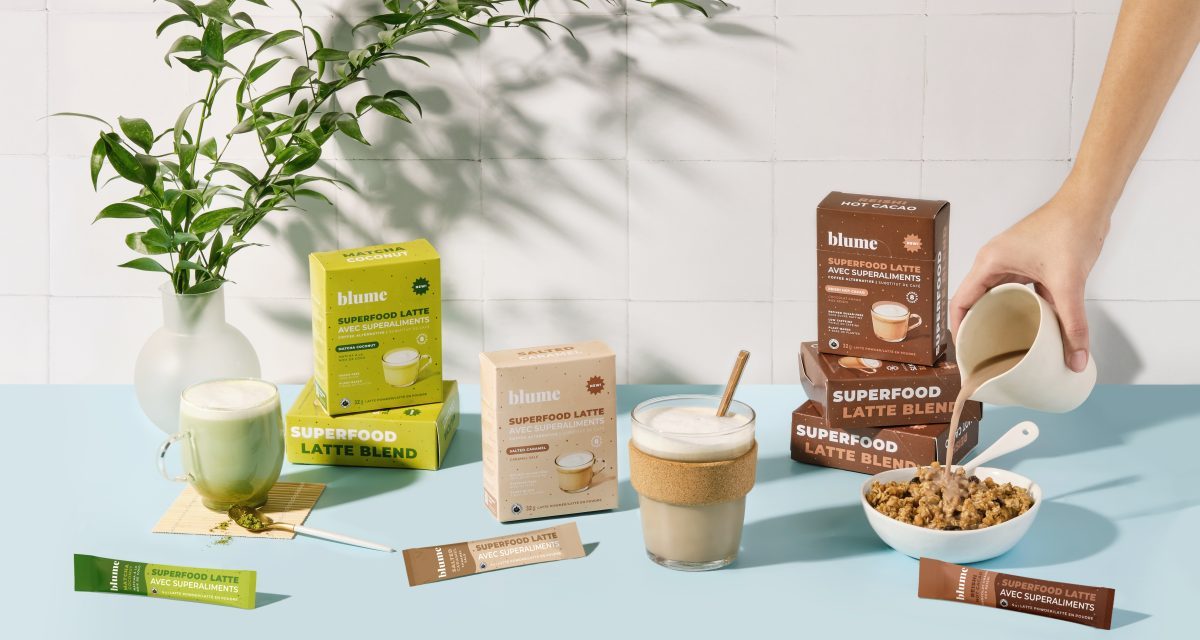How Blume is using customer feedback for product development

Superfood latte brand Blume takes customer feedback seriously.
So much so that almost all of its new products are a direct result of customers’ suggestions. Products such as its SuperBelly water elixir line, mint hot chocolate and salted caramel flavor came from customer feedback.
Karen Danudjaja, co-founder and CEO of Blume, said the company has been gathering feedback since the brand’s inception but has gradually improved its efforts over time. Within the last 12 months, for example, the company has created a Blume community group on Facebook and an Instagram close friends list, which the company uses to generate feedback and engage with loyal customers. The company also sends out five to 10-minute-long surveys to up to 5,000 of its most frequent shoppers a few times a year.
“We started to do more interviews and surveys to really get to know our customers at a deeper level,” Danudjaja said. “We’re running surveys all the time. There’s always on surveys, in our email flows and our post-purchase.”
Founded in 2017, Blume makes wellness-focused latte blends and water elixirs. Blume offers anywhere between 15-20 products at any given time — which are sold on its website, Target and Whole Foods. Thanks to its strategy, the company said it is on pace for its first eight-figure year with a 30% year-over-year growth. Blume has also raised $2.5 million in funding two years ago.
Gathering customer feedback became a bigger priority for Blume after some products didn’t make a splash with customers. An earlier nut butter product, for example, didn’t perform as initially anticipated. Danudjaja said the company previously launched products based on internal research or gut instinct. So the company began gathering feedback to understand customers at a deeper level.
Now, Blume will send out a survey after customers make a purchase, which about 15% of them fill out. The company will also distribute other surveys roughly twice a year on average, which typically have 2,000 respondents and cover a variety of topics like ingredients and pricing. Some of these surveys also aim to understand the interests of Blume customers in their day-to-day lives.
Ad position: web_incontent_pos1
Blume attributes the customer feedback as a key part of the company’s research process that helped it hit major sales goals. When the company was working on a water elixir line SuperBelly, for example, the company started asking customers questions to investigate what sweeteners they prefer and what would be the right price per serving. When Blume officially launched SuperBelly in February, the company sold three months’ worth of products, roughly 12,000 units, in two weeks.
“It’s all these people who feel like they’ve been a part of the journey,” Danudjaja said. “But then we really understood what they were looking for and delivered on it.”
Apart from products, Blume also asks people’s opinion on packaging design and which retailer they should be partnered with. Through customer feedback, the company learned that many of their customers shop at Target — a data point it then used to pitch their products to buyers at Target. When the company first started entering wholesale doors, Blume also tapped its loyal customer base to come up with a minimal packaging design that would look good on shelves.
“It’s not us who have to pick it up off the shelf, it’s our customer,” Danudjaja said. “We went to them to see if this is something that would draw their attention and help us feel better about the choice to move forward.”
Blume also doesn’t restrict itself to solely product-related questions. Danudjaja said Blume also asks questions that would help the brand understand their interests and habits, such as what podcast they listen to or what sport they play. These types of questions, she said, could help inform which podcast the brand should spend marketing dollars on or which sport it should be involved in.
Ad position: web_incontent_pos2
It’s not unusual for brands to send out surveys to shoppers, but for many startups, customer feedback has been playing a bigger role in their strategic directions. Beverage brand Nectar Hard Seltzer, for example, asks shoppers for flavor ideas through text and Discord. Snack brand BelliWelli also uses surveys, email and SMS to create the tagline and packaging that it currently has.
“Those customers that gave you feedback, they feel kind of a commitment to your products,” said Lauren Beitelspacher, associate professor in marketing at Babson College. “If you incorporate the feedback, they feel some sense of ownership. Ultimately, your customers are the users of the product.”
Beitelspacher said that this strategy is a way for brands to meet their customers’ needs and make them feel more loyal to the brand. The CPG category has also gotten more competitive in recent years, which is driving newer entrants to find unique ways to differentiate themselves.
However, Beitelspacher said brands should take customer feedback with a grain of salt. “The thing with customer input is that it’s never perfect,” she said. “Customers never answer surveys honestly. We always answer in an idealized version of ourselves.”
Blume’s Danudjaja said that while the company values every customer feedback, the end decision must still fit the brand’s values. “For the most part, when our customers are asking for specific pain points, we take it really seriously and, within the realm of reason, we try and accomplish all of it,” she said. “But we can’t do it all at once. So we’re picking the things that we think we can solve the best and really make a product that we stand behind.”

